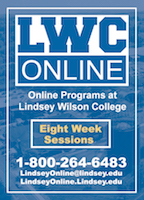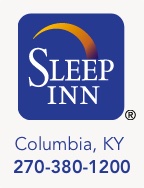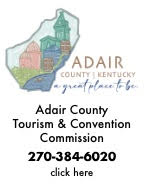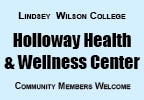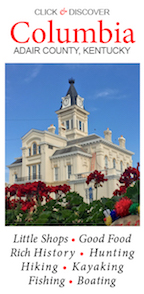| ||||||||||
Dr. Ronald P. Rogers CHIROPRACTOR Support for your body's natural healing capabilities 270-384-5554 Click here for details 


Columbia Gas Dept. GAS LEAK or GAS SMELL Contact Numbers 24 hrs/ 365 days 270-384-2006 or 9-1-1 Call before you dig Visit ColumbiaMagazine's Directory of Churches Addresses, times, phone numbers and more for churches in Adair County Find Great Stuff in ColumbiaMagazine's Classified Ads Antiques, Help Wanted, Autos, Real Estate, Legal Notices, More... 

|
Researchers seek locations of Barn Owl nesting sites BIRDS of KENTUCKY: State has documented only 25 nesting locations statewide for Barn Owl From Kentucky Fish & Wildlife Frankfort, KY - Researchers need the public's help in finding more nesting sites of Kentucky's remaining barn owls. Barn owls, with their distinctive heart-shaped faces and dark eyes, were plentiful across Kentucky as late as the 1960s. Currently, however, there are only about 25 documented nesting locations statewide. Wildlife biologists with the Kentucky Department of Fish and Wildlife Resources need to locate as many barn owl nesting sites as possible to gain a deeper understanding of why this species has declined in the state. Barn owls have gradually lost their historic nesting and foraging habitat as landowners cut down the old trees damaged by storms and converted pastures, hayfields and grasslands to row crops. Biologists, however, are looking for additional reasons for the decline. Researchers are also asking for the public to report any dead barn owls, so that specimens can be collected and examined. Other more common owl species are often confused with barn owls. Barn owls have no ear tufts. They are a medium-sized bird, measuring 14-20 inches tall. However, they can appear larger when in flight due to their 3 1/2-foot wingspan. Barn owls have a whitish face and breast with whitish to pale cinnamon bodies. They do not hoot like some owls species. Instead, they screech and hiss, especially when approached. For more information on identifying barn owls, please see the Kentucky Fish and Wildlife webpage at: Identifying Kentucky's Owls/Whoo's Whoo out there?. Barn owls prefer open areas such as hayfields and pasture; they are usually not found in the woods. Although they often nest in hollow trees, barn owls also regularly nest in manmade structures such as old barns, silos, grain bins, chimneys, hay lofts and attics. They also may settle in older residential areas that have larger, cavity-prone trees. Barn owls can nest year-round in Kentucky, although most of the nesting activity occurs from March through August. They do not build a nest of sticks and grass. Instead, they will lay their eggs directly on the surface of the nest site they choose. For more information about barn owls in Kentucky and the research project, go online to BarnOwls. Anyone with information about the location of a barn owl nest or a dead barn owl should contact Wildlife Biologist Kate Heyden at 1-800-858-1549, ext. 4475. Observers can also e-mail Heyden at kathryn.heyden@ky.gov. Barn owls are sensitive to disturbance, so if a nest is found, it's best to leave the owls be and avoid attracting attention to it. Researchers are careful to document nests without disturbing the owls. For the protection of owls and landowners, exact nesting locations and landowner information is strictly confidential and will not be released to the public. Information provided to Kentucky Fish and Wildlife for this study is used for research purposes only. This story was posted on 2013-03-27 16:52:34
Printable: this page is now automatically formatted for printing.
Have comments or corrections for this story? Use our contact form and let us know. More articles from topic News:
Go Higher Grant available to adults 24 up for college aid Court of Appeals will hear case from Adair Circuit Court Lindsey Wilson Baseball hosts Union College, Wednesday Writer: Neal Gold will make the right decisions at WRH Adair Co. Government offices - mostly closed Good Friday PSC grants rate adjustment to Taylor County RECC The Gardens from our past guide the gardens of our future Resignation of WRH CEO official; Administrative Team in charge RS Elementary 2nd Annual Anchors Aweigh 5k is April 13, 2013 Event opens LWC student's eyes to struggles of impoverished View even more articles in topic News |
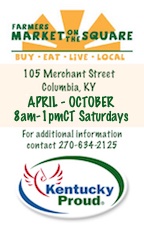

|
||||||||
|
| ||||||||||
|
Quick Links to Popular Features
Looking for a story or picture? Try our Photo Archive or our Stories Archive for all the information that's appeared on ColumbiaMagazine.com. | ||||||||||
|
Contact us: Columbia Magazine and columbiamagazine.com are published by Linda Waggener and Pen Waggener, PO Box 906, Columbia, KY 42728. Please use our contact page, or send questions about technical issues with this site to webmaster@columbiamagazine.com. All logos and trademarks used on this site are property of their respective owners. All comments remain the property and responsibility of their posters, all articles and photos remain the property of their creators, and all the rest is copyright 1995-Present by Columbia Magazine. Privacy policy: use of this site requires no sharing of information. Voluntarily shared information may be published and made available to the public on this site and/or stored electronically. Anonymous submissions will be subject to additional verification. Cookies are not required to use our site. However, if you have cookies enabled in your web browser, some of our advertisers may use cookies for interest-based advertising across multiple domains. For more information about third-party advertising, visit the NAI web privacy site.
| ||||||||||


























